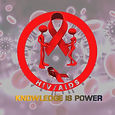How HIV is transmitted and Spread
Human Immunodeficiency Virus (HIV) is the virus that can lead to Acquired Immune Deficiency Syndrome (AIDS) when left untreated.
HIV attacks and destroys the body’s defense mechanism (immune system) which has the CD4+ cells (T helper cells), which help the immune system fight off infections. Without treatment, HIV decreases the number of CD4+ cells (T helper cells) in the body, making the person more susceptible to infections or infection-related cancers.
The more and fast the immune system is being destroyed the more the opportunistic infections or cancers take advantage of a very weak immune system signaling that the person has AIDS, the last stage of HIV infection.
HIV Transmission:
Through certain body fluids—blood, semen, pre-seminal fluid, rectal fluids, vaginal fluids, and breast milk—from a person who has HIV can transmit HIV. When these fluids come in contact with a mucous membrane (which are found inside the rectum, vagina, penis, and mouth), or damaged tissue or be directly injected into the bloodstream (from a needle or syringe), then transmission occurs.
HIV is spread mainly by;
Having anal or vaginal sex with someone who has HIV without using a condom or taking medicines to prevent or treat HIV.
For the HIV-negative partner, receptive anal sex (bottoming) is the highest-risk sexual behavior, but you can also get HIV from insertive anal sex (topping).
Either partner can get HIV through vaginal sex, though it is less risky for getting HIV than receptive anal sex.
Sharing needles or syringes, rinse water, or other equipment (works) used to prepare drugs for injection with someone who has HIV. HIV can live in a used needle up to 42 days depending on temperature and other factors.
Less commonly, HIV may be spread
From mother to child during pregnancy, birth, or breastfeeding. Although the risk can be high if a mother is living with HIV and not taking medicine, recommendations to test all pregnant women for HIV and start HIV treatment immediately have lowered the number of babies who are born with HIV.
By being stuck with an HIV-contaminated needle or other sharp object. This is a risk mainly for health care workers.
In extremely rare cases, HIV has been transmitted by:
Oral sex—putting the mouth on the penis (fellatio), vagina (cunnilingus), or anus (rimming). In general, there’s little to no risk of getting HIV from oral sex. But transmission of HIV, though extremely rare, is theoretically possible if an HIV-positive man ejaculates in his partner’s mouth during oral sex.
Receiving blood transfusions, blood products, or organ/tissue transplants that are contaminated with HIV. This was more common in the early years of HIV, but now the risk is extremely small because of rigorous testing of the blood supply and donated organs and tissues.
Eating food that has been pre-chewed by a person with HIV. The contamination occurs when infected blood from a caregiver’s mouth mixes with food while chewing. The only known cases are among infants.
Being bitten by a person with HIV. Each of the very small number of documented cases has involved severe trauma with extensive tissue damage and the presence of blood. There is no risk of transmission if the skin is not broken.
Contact between broken skin, wounds, or mucous membranes and HIV-infected blood or blood-contaminated body fluids.
Deep, open-mouth kissing if both partners have sores or bleeding gums and blood from the HIV-positive partner gets into the bloodstream of the HIV-negative partner. HIV is not spread through saliva.

.jpg)




